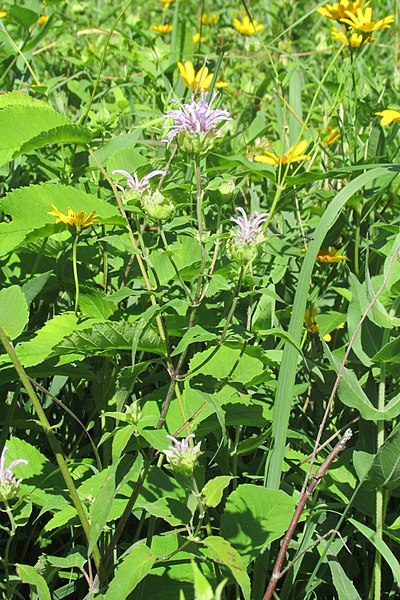Bee Balm Identification – Monarda fistulosa
Heads up
Bee Balm is known by a few names. Its scientific name is Monarda fistulosa, but some people call it Wild Bergamot, Horsemint, or Mint-leaf Bee-balm. This diversity of names comes from various traditions and usages over time. Belonging to the Lamiaceae family – which is a botanical way of saying the Mint family – it shares some common characteristics with mint plants, which usually have square stems and strong scents, and Bee Balm is no exception.
Bee Balm: Key Parts in Photos




Where to find it
If you’re wandering around sunny spots, especially in dry fields, prairies, or along roads, you might come across Bee Balm. It loves these spots. In fact, this plant is native to areas stretching from Canada all the way to North East Mexico. Being a perennial, it comes back year after year, growing from 2 to 4 feet tall. If you’re near woods or fields that haven’t been planted, you might see this plant showing off its vibrant flowers.
How to identify Bee Balm
Bee Balm flowers are pretty unique. You’d see a round cluster of tubular flowers standing alone at the end of stems. The colors are a visual treat ranging from purple, lavender to pink. If you look closely, each flower seems to have lips! A curved lower one and a straight upper one. The upper lip sometimes sports a tuft of white hairs. You’ll also see 2 stamens sticking out. Underneath the flower, you’ll find a tube-like structure called a calyx, which holds the flower.
Bee Balm leaves are another clue. They’re opposite each other on the stem and are simple. These leaves can be between 1 to 4 inches long, and they have toothed edges. When you touch them, the top might feel smooth or a bit hairy, while the bottom is usually hairy. The leaves of the Bee Balm are aromatic. Some people use them in teas because of their delightful smell and taste. The stem is square (a Mint family signature) and can be a reddish-brown color with some hairs.
After the flowers have done their show, they drop off, but they leave behind the calyxes. Inside, seeds develop. As they ripen, the head turns dark brown. The seeds are smooth, oval, and pretty tiny – about the size of a pin’s head.
